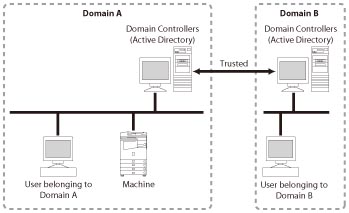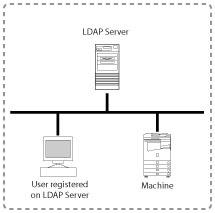 e-Manual e-Manual | Top Site map Site map Help Help |
|---|---|
 Category Top
Category Top Overview of This Function
Overview of This Function Overview of Login Services
Overview of Login Services Default Authentication (Department ID Management)
Default Authentication (Department ID Management) Login Screens
Login Screens SSO-H (Single Sign-On H)
SSO-H (Single Sign-On H) Login Screens
Login Screens System Requirements
System Requirements SMS (Service Management Service)
SMS (Service Management Service) SSO-H (Single Sign-On H)
SSO-H (Single Sign-On H) Before Starting SMS (Preparations)
Before Starting SMS (Preparations) Specifying the SSL Encrypted Communication Settings
Specifying the SSL Encrypted Communication Settings Before Logging In to SSO-H
Before Logging In to SSO-H Logging In to SMS
Logging In to SMS Logging In with the SMS Password
Logging In with the SMS Password Logging In with the User Name and Password of the Machine
Logging In with the User Name and Password of the Machine Logging In from the Remote UI Portal
Logging In from the Remote UI Portal Logging Out from SMS
Logging Out from SMS Managing Applications
Managing Applications Starting/Stopping Applications
Starting/Stopping Applications Uninstalling Applications
Uninstalling Applications Confirming Application Preferences
Confirming Application Preferences Managing Application Licenses
Managing Application Licenses Setting Application Authentication Information
Setting Application Authentication Information Installing Applications
Installing Applications Managing System Applications and Login Services
Managing System Applications and Login Services Login Service Selection
Login Service Selection Uninstalling a Login Service
Uninstalling a Login Service Starting/Stopping System Applications
Starting/Stopping System Applications Uninstalling System Applications
Uninstalling System Applications Installing System Applications
Installing System Applications Changing the Login Method for SMS
Changing the Login Method for SMS Confirming System Information
Confirming System Information Confirming Application Data
Confirming Application Data Confirming License Files
Confirming License Files Changing the Password
Changing the Password Managing Application Setting Information
Managing Application Setting Information Managing Application Logs
Managing Application Logs Logging In to SSO-H
Logging In to SSO-H Menu for Administrators
Menu for Administrators Setting the User Information for SSO-H
Setting the User Information for SSO-H Registering/Editing User Data for Local Device Authentication
Registering/Editing User Data for Local Device Authentication Registering/Editing User Data for Active Directory Authentication
Registering/Editing User Data for Active Directory Authentication Registering/Editing User Data for LDAP Server Authentication
Registering/Editing User Data for LDAP Server Authentication Setting the SSO-H
Setting the SSO-H Setting the User Authentication System
Setting the User Authentication System Registering/Editing LDAP Server Information
Registering/Editing LDAP Server Information Setting the User Group to Register the Server Administrator
Setting the User Group to Register the Server Administrator Specifying the Number of Users Displayed on the Touch Panel Display
Specifying the Number of Users Displayed on the Touch Panel Display Setting the Access Mode in Sites
Setting the Access Mode in Sites Setting the Security for SSO-H
Setting the Security for SSO-H Allowing Administrators to Operate Using the Default Password
Allowing Administrators to Operate Using the Default Password Setting Password Restrictions
Setting Password Restrictions Setting the Lockout Function
Setting the Lockout Function Setting Web Service Authentication System
Setting Web Service Authentication System Menu for General Users
Menu for General Users File Formats for Local Device Authentication User Information Files
File Formats for Local Device Authentication User Information Files SDL Format
SDL Format NetSpot Accountant 3.x Format
NetSpot Accountant 3.x Format NetSpot Accountant 4.x Format
NetSpot Accountant 4.x Format Troubleshooting
Troubleshooting Trouble That May Occur When the Windows Server Firewall Is Set
Trouble That May Occur When the Windows Server Firewall Is Set Other Trouble
Other Trouble

|
IMPORTANT
|
|
If you are logging in as the administrator for Local Device Authentication and the user name and password is still the default setting, the screen to change the password appears when you click [Log In]. Change the password to increase security.
If you want to use Local Device Authentication and Department ID Management at the same time to keep track of the number of printed sheets for each Department ID, set [Department ID Management] to 'On'. To use Local Device Authentication and Department ID Management at the same time, the information registered for Local Device Authentication and the user information for Department ID Management (Department ID and PINs) must match. If they do not match, the user cannot log in.
You cannot use Server Authentication and Department ID Management at the same time.
|
|
NOTE
|
|
The three user authentication systems can be switched using a Web browser. (See "Setting the User Authentication System.")
The default setting is 'Server Authentication + Local Device Authentication.' To increase security, set the user authentication system to 'Server Authentication' or change the user name and password of the Local Device Authentication administrator immediately after you start using SSO-H.
|